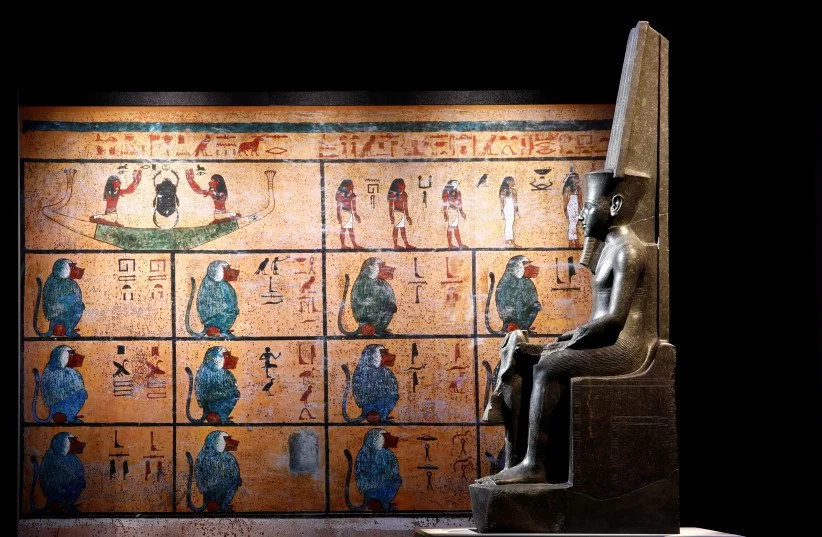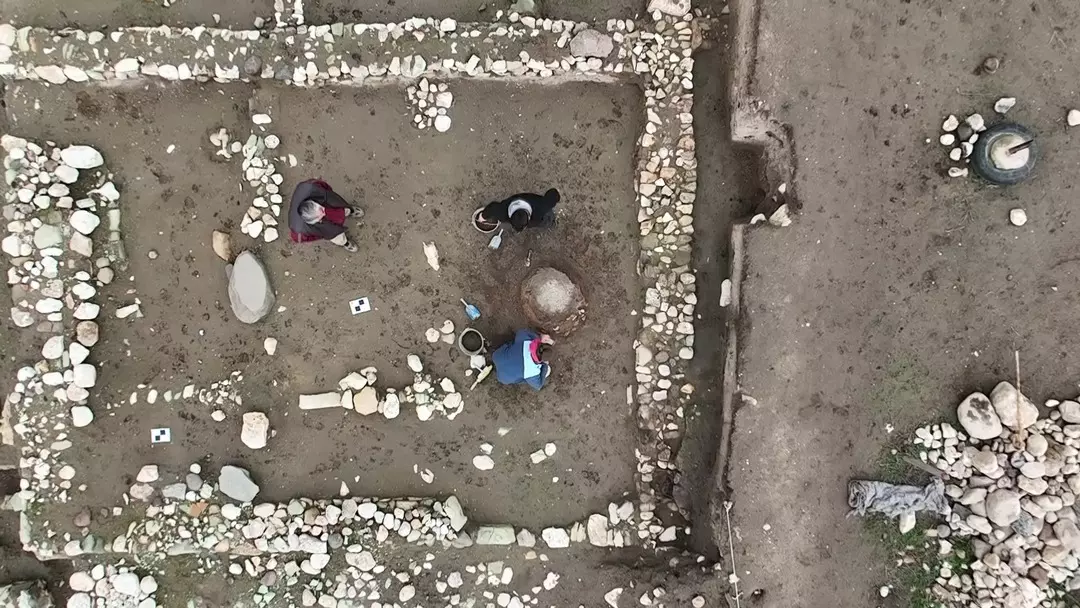A group of archaeologists led by Franck Goddio discovered temples for the Greek goddess Aphrodite and the Egyptian god Amun off the shore of Egypt, according to CNN on September 19.
The god Amun protecting Tutankhamun is pictured during a press visit of the Tutankhamun, Treasures of the Golden Pharaoh exhibition, displaying more than 150 original artefacts, at the Grande Halle de la Villette in Paris, France, March 21, 2019.
The study team investigated the ancient port city of Thonis-Heracleion in the Bay of Aboukir and found the temple ruins in the southern canal of the city.
Although the buried metropolis was discovered in 2000, many of the hidden treasures are still being discovered.
The temple in Egypt
The temple, which was devoted to Amun, the Egyptian god of air, is thought to have fallen "during a cataclysmic event dated to the mid-second century BC," according to the European Institute for Underwater Archaeology (IEASM) institute. The city of Thonis-Heracleion completely vanished under the sea in a 110 square kilometer area of the Nile delta as a result of rising sea levels, earthquakes followed by tidal waves, and land liquefaction events.
"The ancient temple was once the site where pharaohs went to receive the titles of their power as universal kings from the supreme god of the ancient Egyptian pantheon,” IEASM explained.
“Precious objects belonging to the temple treasury have been unearthed, such as silver ritual instruments, gold jewelry and fragile alabaster containers for perfumes or unguents,” IEASM said. “They bear witness to the wealth of this sanctuary and the piety of the former inhabitants of the port city.”
Sep 8, 2023; Paris, FRA; The Venus de Milo or Aphrodite of Melos is an ancient Greek sculpture unearthed on the island of Milos that was created during the Hellenistic period. (credit: MICHAEL MADRID/USA TODAY SPORTS VIA REUTERS)
“It is extremely moving to discover such delicate objects, which survived intact despite the violence and magnitude of the cataclysm,” mentioned Goddio, president of IEASM and director of excavations.
The Greek temple of antiquity
Numerous metal and ceramic idols discovered helped to pinpoint the temple that was dedicated to the Greek goddess of love Aphrodite.
Because it "illustrates that Greeks who were allowed to trade and settle in the city during the time of the Pharaohs of the Saïte dynasty (664 - 525 BC) had their sanctuaries to their own gods," IEASM added, this discovery is regarded to have been especially significant.
A number of weapons belonging to Greek mercenaries were also found. “They were defending the access to the Kingdom at the mouth of the Canopic Branch of the Nile. This branch was the largest and the best navigable one in antiquity,” IEASM explained.








